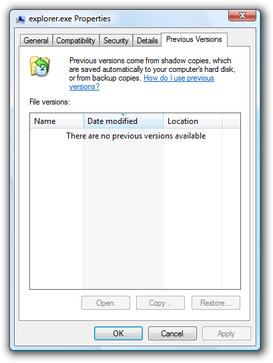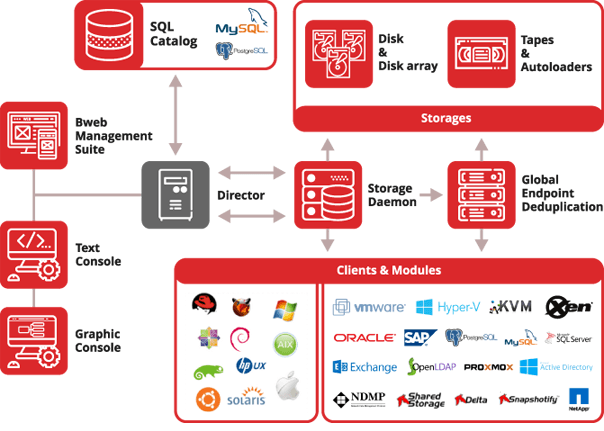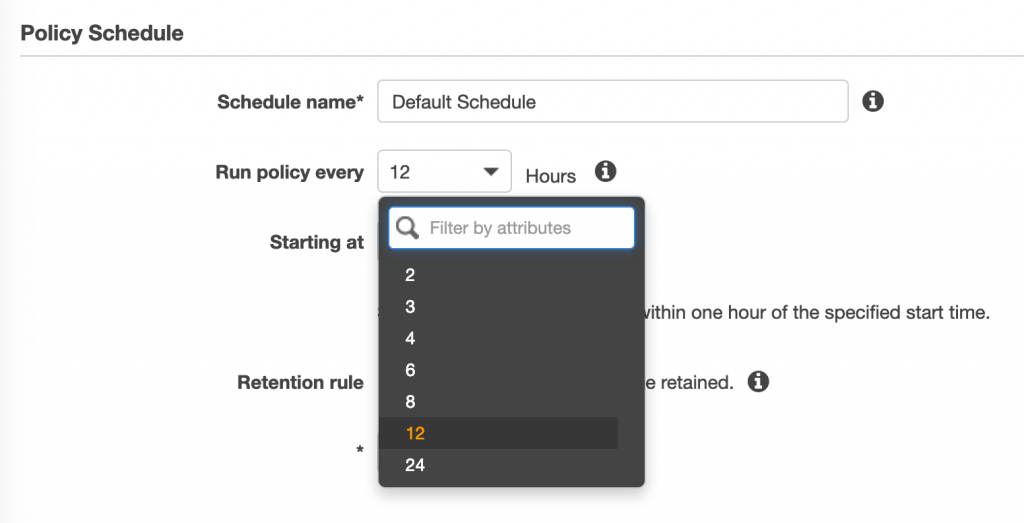The one of the differences between a storage snapshot and a backup is that the snapshot is stored at the same location as the original data. Therefore, it depends entirely on the reliability of the source. This means that in case of a disaster or damage to the source data, the storage snapshot will be lost or inaccessible. One of the common abuse of language in Virtualisation is the use of the term snapshot to designate a backup.Let me explain the fundamental difference between a virtual machine snapshot and backup. Virtual machine snapshot. Both VMware and Hyper-V snapshots capture the state (eg. Powered-on, powered-off, suspended), data. Delta backups only capture the data changed since the last backup or delta backup, meaning less log backups are read for a recovery. There are two options available when creating a delta backup: Differential Backup – stores all data changed since the last full backup. The major difference between snapshot and backup in SQL Server is the time taken by the both to backup and restore data. However, backups are quite slow when compared snapshots while taking backup and restoring the database. Snapshot is really fast and there is no change in data.
Hi all,
My name is Man-Ted Chan and I’m from the SAP HANA Product Support team. Today I’m just writing up an add-on to a previous blog and video:
Backup and recovery blog
Storage Snapshot video
This blog will be about a new feature in HANA SP10, delta backups.
Starting with SPS 10 delta backups were introduced, this feature allows users to perform backup and recoveries quicker. Delta backups only capture the data changed since the last backup or delta backup, meaning less log backups are read for a recovery.
There are two options available when creating a delta backup:
Differential Backup – stores all data changed since the last full backup.
Incremental Backup – Stores the data changed since the last full or last delta backup. These backups are smaller than the differential backups.
First choose a user that has the BACKUP ADMIN authorization, in this case we will be using the SYSTEM user.
Right click on the system you would like to create a backup for
In the ‘Backup Type’ select the delta backup options
This error occurred because I did not create full data backup prior to making this delta backup, as mentioned before delta backups are just the difference between the current time to the last full backup. The nameserver trace will show the following:
[23117]{300068}[-1/-1] 2016-02-12 20:18:27.643831 i Backup BackupMgr_DeltaBackupTracker.cpp(00845) : [DBT] received BackupCatalog_DifferentialBackupStartEntry for 1455308307601
[23117]{300068}[-1/-1] 2016-02-12 20:18:27.644641 i Backup BackupMgr_DeltaBackupTracker.cpp(00113) : No data backups found.
After we create a full data backup in the nameserver trace we will see:
i Backup BackupMgr_DeltaBackupTracker.cpp(00845) : [DBT] received BackupCatalog_DifferentialBackupStartEntry for 1455309927467
e Backup BackupMgr_DeltaBackupTracker.cpp(00957) : Requested volume 0 not found in backup tracker.
i Backup BackupMgr_DeltaBackupTracker.cpp(00685) : [DBT] received BackupCatalog_DataDestinationStartEntry for 1455309927467
- backup.log will show:
BACKUP SAVE DATA will write to the following files:
INFO BACKUP to file: /usr/sap/xx/HDB00/backup/data/DIFF_DATA_BACKUP_databackup_differential_0_1455309927467_0_1
INFO BACKUP to file: /usr/sap/xx/HDB00/backup/data/DIFF_DATA_BACKUP_databackup_differential_1455309613593_1455309927467_1_1
….
INFO BACKUP SAVE DATA finished successfully

As we can see the only way to tell it is a differential backup is by the filename
*PREFIX*_databackup_differential
Incremental backups are done the same

And the logs are not much different as it just shows the file name is *PREFIX*_databackup_incremental (IE. INC_DATA_BACKUP_databackup_incremental_0_1455310512146_0_1)
Please note that in SPS 10 you cannot create a delta backup in the HANA Cockpit, but this feature is available in HANA SPS 11
HANA SPS 10 will show the delta backup options as disabled
You can view the backups in the HANA Studio by opening the backup wizard
To see our delta backups are not there, to see them we will need to check ‘Show Delta Backups’
Please note in the HANA cockpit the delta backups are not visible and not option to view them (SPS 10>
Recoveries are performed the same as before
Please note that if you choose ‘Recover the database to a specific data backup or storage snapshot’ you won’t have the option to select a delta
Select the log area
Select the data backup
After this we can select the delta backup option
Please note that if you selected ‘Recover the database to a specific data backup or storage snapshot’ this option will be grayed out.
Despite the availability of many other communication tools, the email remains the most important means of communication for companies around the world. But are companies really always aware that their emails can contain business-critical data that need to be preserved and kept available in the long term?
Email compliance regulations are constantly growing and so are, therefore, the legal requirements governing the handling of such data. It is essential that IT decision-makers get to grips with the issue of securing email data and include this in their strategic IT security respectively email governance policies. Global companies need to remember that compliance requirements can vary from country to country.
Overview
To Preserve and to Protect Business-Critical Data

But how can a company preserve and protect important, business-critical data? The answer is to implement both an email archiving solution and a backup software. Deploying both solutions within a corporate environment is actually very important as they fulfill different purposes and complement each other well.
What are the Differences?
The primary objective of any email archiving solution is to ensure that email data remains available and retrievable over time. For companies, this is particularly important with emails involved in the preparation, completion, execution or reversal of a business transaction (e.g. invoices, quotations, support inquiries, or appointment requests).
Data Backup Services
In contrast, the purpose of a backup is to store data in the short and medium term, providing a regular snapshot of the data in question. This concept allows copies of whole data sets to be made so that they can be swapped out to external storage or a cloud environment and restored at a later date.
So, a backup is merely for the purpose of disaster recovery, allowing temporary, backed up data sets to be copied back from external storage in the event of data loss. The following objectives can be achieved through iThe statements in this document are based on the fundamental concepts of backups and email archiving. The functions of an email archiving solution discussed here are based on the range of functions provided by MailStore Server. The functions of backup and email archiving solutions may vary depending on the provider.email archiving1:
| Objectives | Email Backups | Email Archiving |
| Eliminate mailbox quotas | ||
| Eliminate PST files | ||
| Reduce storage requirements through de-duplication and compression | ||
| Reduce the workload of email servers and simplify backup and restore processes | ||
| Provide complete, tamper-proof and long-term email retention | ||
| Helps to meet compliance requirements | ||
| Assistance with eDiscovery scenarios | ||
| Full-text indexing of emails for fast searches | ||
| End users: restore lost emails quickly and easily |
What’s Behind It All?
Eliminate Mailbox Quotas
An email archiving solution allows emails that have been successfully archived to be deleted (automatically) from the email server’s mailboxes, thus freeing up storage space on the server.
A backup solution usually creates temporary copies of the email server’s data on an external storage medium or in the cloud. In this context – and depending on the backup concept being used – “temporary” means that data within the backup is overwritten or deleted (e.g. in the case of incremental backups), or deleted completely according to a fixed schedule if the backup file is no longer needed. Creating these copies does not eliminate the need for mailbox quotas – “full mailboxes” and the often associated need to “swap out” emails (e.g. to external PST files) remain a nuisance for users and IT administrators alike.
Eliminate PST Files
PST files are mainly used to transfer emails from a user’s mailbox (e.g. due to mailbox quotas) or to create local copies of the emails on the user’s PC. The contents of the mailbox are copied manually or automatically (e.g. via the Microsoft Outlook function AutoArchive) into a PST file, then swapped out to an external storage medium, allowing the contents to be deleted from the user’s mailbox if necessary.
Many companies are trying to get rid of PST files altogether as they often harbor risks. They are considered error-prone and inefficient, and often take up a lot of storage space. PST files are easily damaged or lost, particularly as they are often stored across a variety of users’ PCs and locations. This makes it more difficult to back up files and frequently results in key data being lost. Moreover, PST files can’t be browsed using a full-text search function and aren’t tamper-proof either.
In this regard, email archiving offers crucial benefits for IT administrators in particular, and can also help to meet companies requirements. The emails are archived in a centrally-administered system designed for long-term retention, while taking account of necessary regulatory and compliance requirements. This gives the IT administrator control over the entire archiving process. Because the archived emails can be deleted automatically from the email server, PST files become redundant as a potential solution for bypassing mailbox quotas. The contents of existing PST files can also be archived centrally, allowing end users to browse them with ease.
It’s also fundamentally possible to back up PST files independently of any archiving process in use. However, as this approach doesn’t allow mailbox quotas to be bypassed, it’s not possible to fully eliminate PST files using backups.
Reduce Storage Requirements Through De-Duplication and Compression
Data Backup Process
Another advantage of email archiving compared to PST files is the ability to de-duplicate and compress archived emails, meaning that the archive uses less storage space.
While it’s true that a backup solution too can compress and – depending on the provider – de-duplicate data, an email archiving solution has the added crucial benefit of offloading the email server, as the latter no longer has to retain emails that have already been archived.
Reduce the Workload of the Email Servers and Simplify Backup and Restore Processes
By applying “rules” to delete emails from the server after successful archiving, the volume of data on the server can be reduced. This can significantly accelerate subsequent backups and restore routines (in the event of data loss) on the email server, and thus substantially reduce the downtime of this business-critical system. As well as generally alleviating the data load on the email server, email archiving can also enhance the performance of the backup process. A backup solution can’t do this on its own.
Provide Complete, Tamper-Proof and Long-Term Email Retention
The main aim of any email archiving solution is to retain email data in a form that is complete, tamper-proof while providing long-term availability (see Helps to Meet Compliance Requirements).

Completeness is usually achieved by archiving emails directly upon arrival at/departure from the email server (known as journaling). A backup solution merely saves the email server in its current state (snapshot). This increases the likelihood of users deleting and losing email data before the backup is created.
Professional email archiving solutions help to retain data in a “tamper-proof” way through encryption, the formation of hash values, restricting user privileges to a necessary minimum, and maintaining audit logs of relevant changes and user events. Some backup solutions are now also being marketed with tamper-proofing in mind – although exactly what this involves varies from provider to provider.
An email archiving solution differs from a backup solution in that it often retains data in the archive for several years, while a backup solution normally only stores data in the short and medium term. A backup, therefore, is merely for the purpose of disaster recovery, allowing temporary, backed up data sets to be restored from external storage in the event of data loss.
Helps to Meet Compliance Requirements
Depending on the solution in place, archiving email data in a complete, tamper-proof and long-term manner helps to meet compliance requirements, as emails too can be subject to varying compliance requirements depending on the country and industry in question.
A key criterion for this to happen is the integrity of the data in question: with journal archiving, emails are archived the moment they are received or sent, while a backup usually follows a certain schedule and harbors the risk of tampering or data loss in the interim. GDPR options and retention policies are supported by most email archiving solutions and, indeed, a number of backup solutions, although in the latter case, the configuration options often aren’t as user-friendly or comprehensive.
Database Snapshot Vs Backup
Assistance with eDiscovery scenarios
Outside of Anglo-American jurisdictions, eDiscovery is usually understood to mean the process by which electronically stored information is localized, procured, reviewed, and exchanged.
Both professional email archiving and backup solutions can help with eDiscovery scenarios as they usually provide a search function, as well as partial recovery and export functions. However, it’s important to bear in mind that the functions of a backup solution aren’t as comprehensive as those of an email archiving solution. If PST files contain emails (see Eliminate PST Files) which in turn are stored in backups, eDiscovery scenarios could prove laborious and time-consuming.
Full-Text Indexing of Emails for a Fast Search
Some professional email archiving solutions record the contents and metadata of archived emails and their attachments in a full-text index. Provided that the necessary privileges have been granted, this enables end users to search for certain emails quickly and efficiently in the live system without having to rely on the IT administrator. There are also email archiving solutions that offer this function through integration in Office applications, such as Microsoft Outlook.
While it may be possible to browse these items separately with a number of backup solutions, this function is generally reserved for the IT administrator and restricted to certain contents and metadata.
End Users: Restore Lost Emails Quickly and Easily
For end users, email archiving solutions also offer advantages over backup solutions when it comes to recovery, too. End users are able to search for certain emails using the search function before recovering them independently. No additional IT capacity is required to restore emails, i.e. there is no need for the IT administrator to manually search backups for certain emails and restore them for the user. By contrast, a backup solution does not normally give end users direct access to the data.
Important to Know: Ensuring Data Privacy

To avoid conflicts with data privacy regulations when archiving incoming and outgoing emails, we recommend prohibiting the use of private email or requiring that employees use only external email services. The policy can be specified in writing, for example, in guidelines for using the company’s IT infrastructure, in a company agreement, an employee’s declaration of consent, or an individual employment contract.
So, to conclude:
Email archiving and backing up emails are two completely different solutions that pursue different objectives. Whereas backups are designed to cope with disaster recovery scenarios and store data only for a limited period, the job of an email archiving solution is to ensure that the data is retrievable and available, even over a long period of time. Incidentally, it is important to note that the email archives themselves should be backed up as well. It follows, then, that both data backups and email archiving are key elements in the IT strategy of any security-conscious firm.
You can find these differences and explanations between backup and email archiving within our free info sheet Email Archiving vs Email Backup for download:
If you are interested to see the functions of the email archiving solution MailStore Server in more detail, register for one of our regular, free live webinars:
